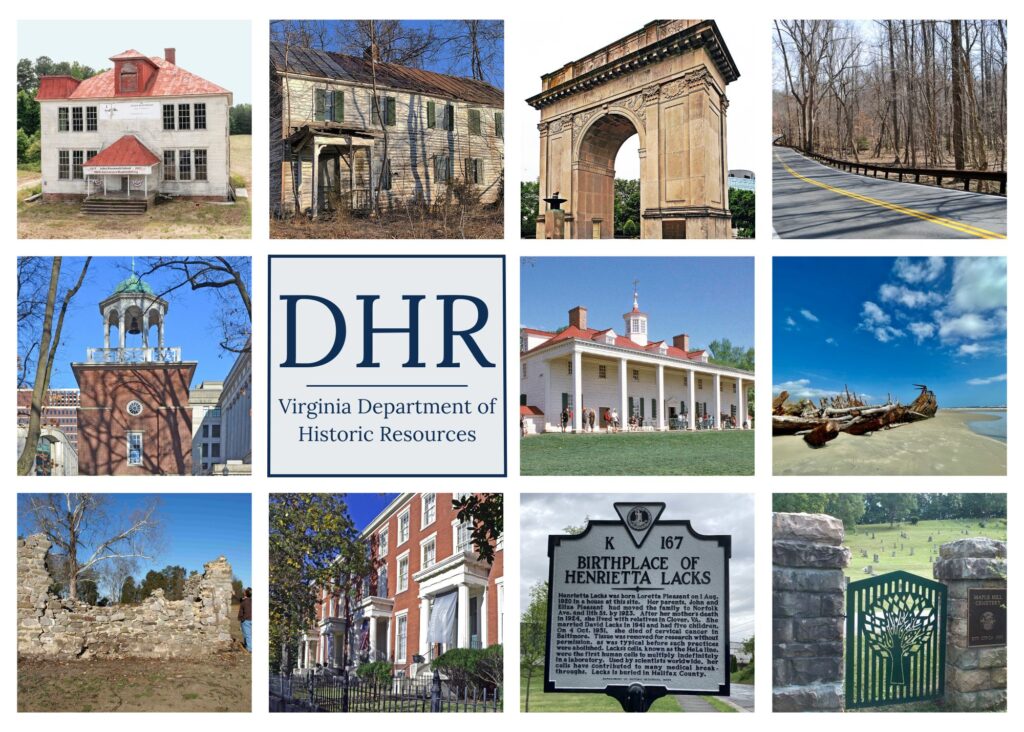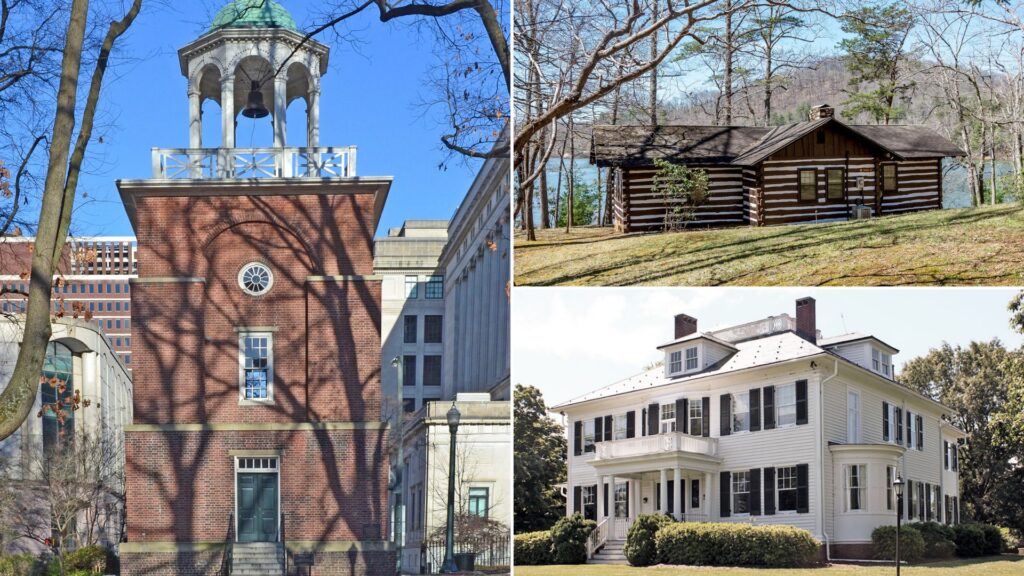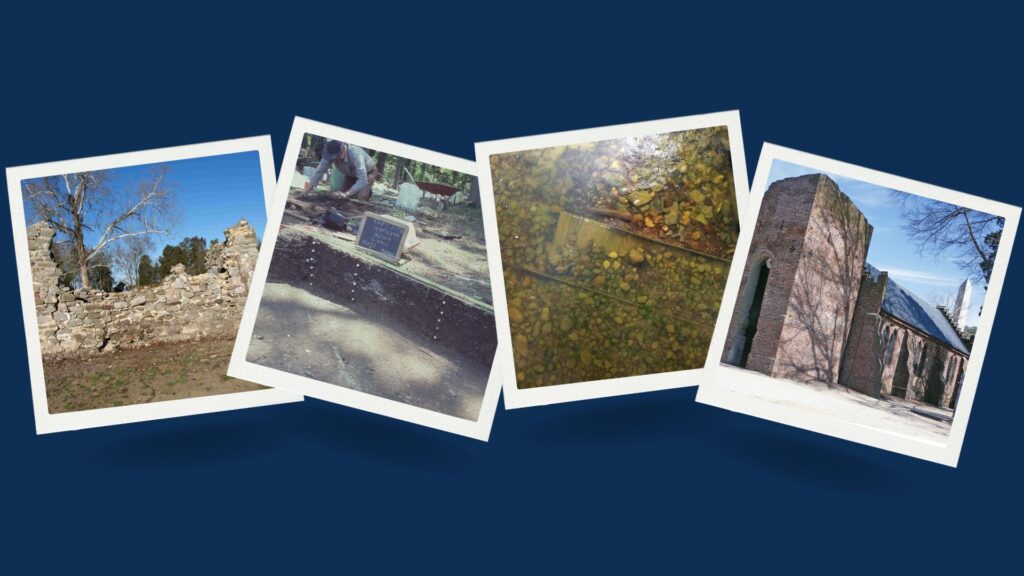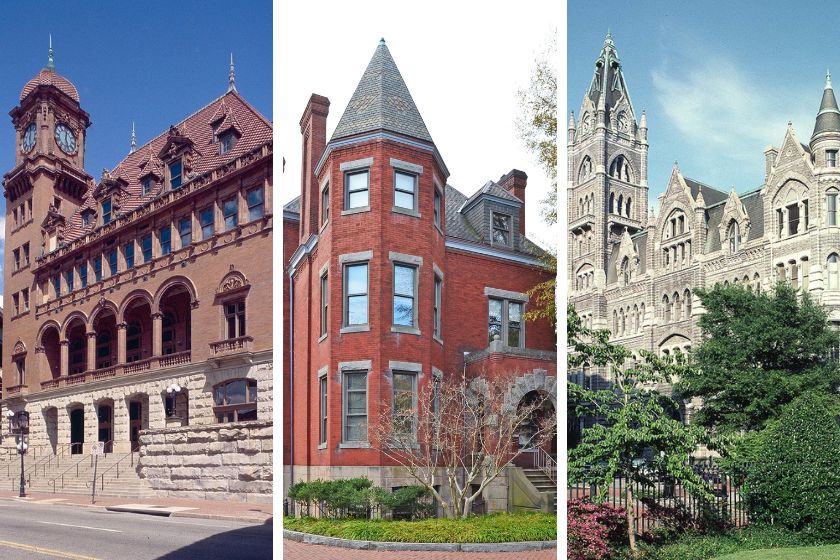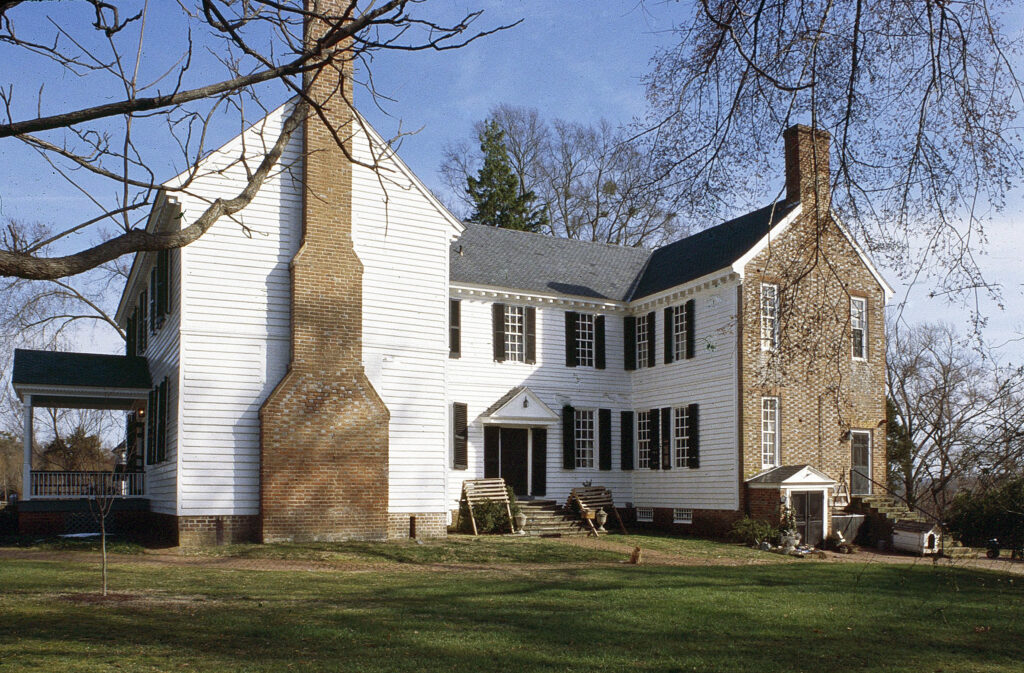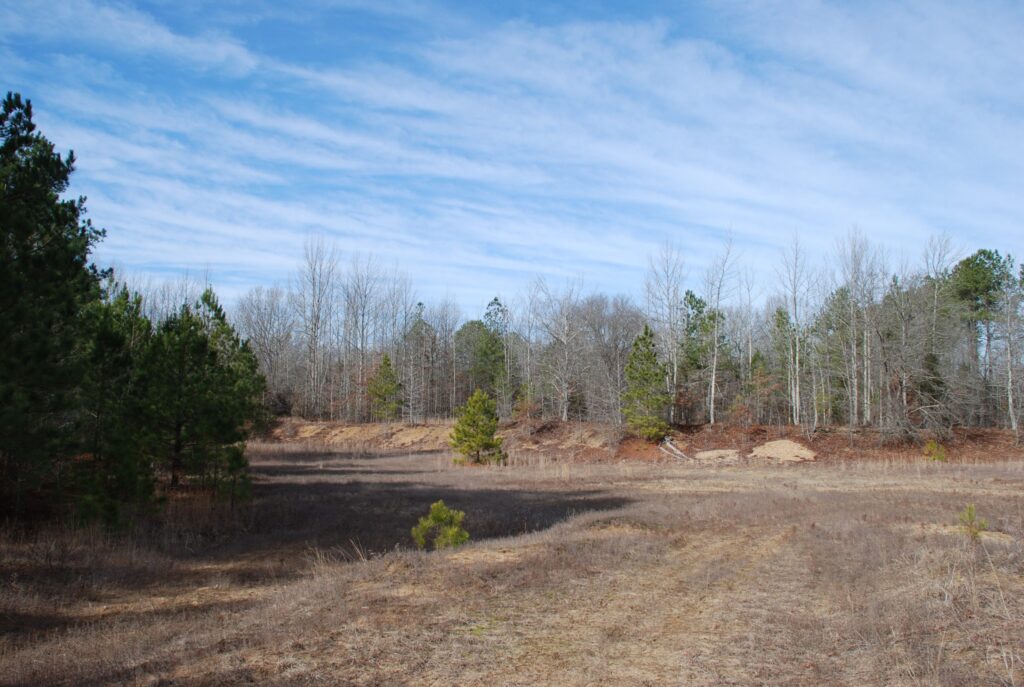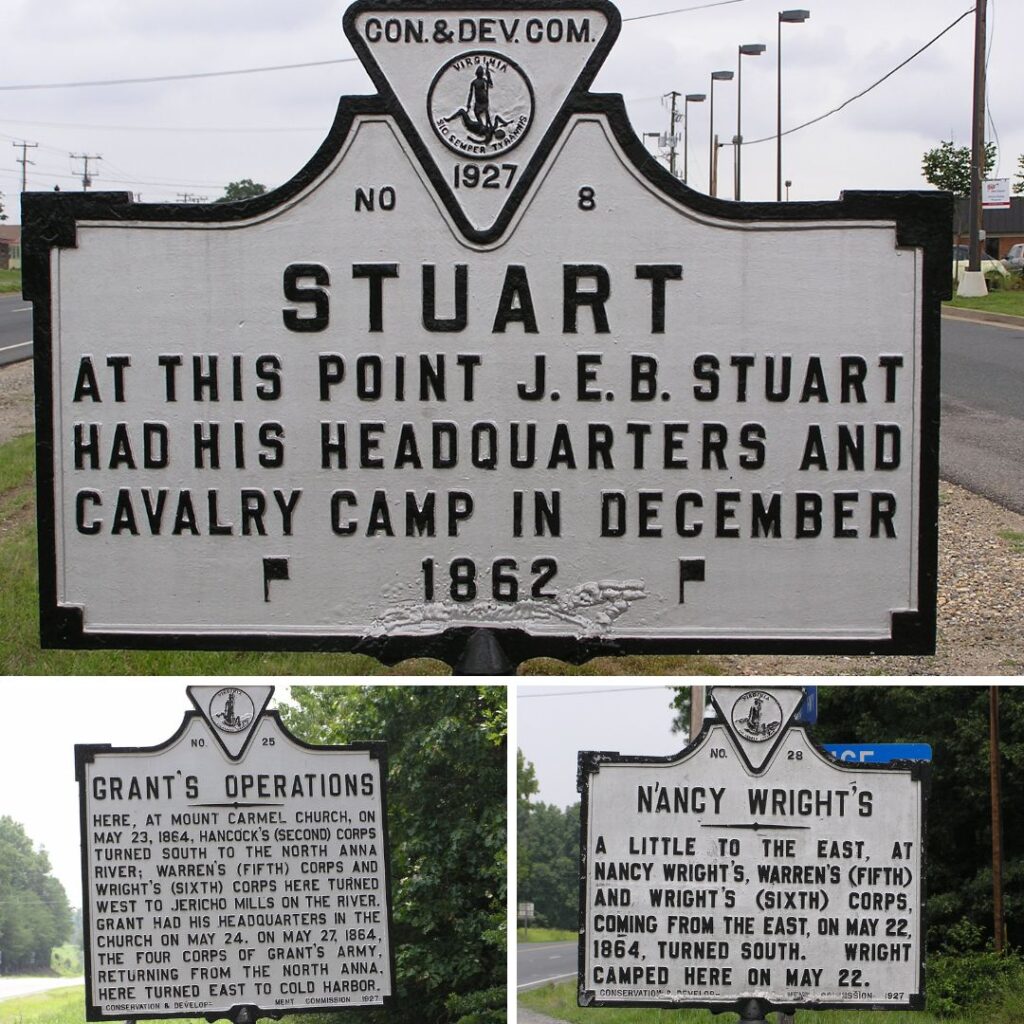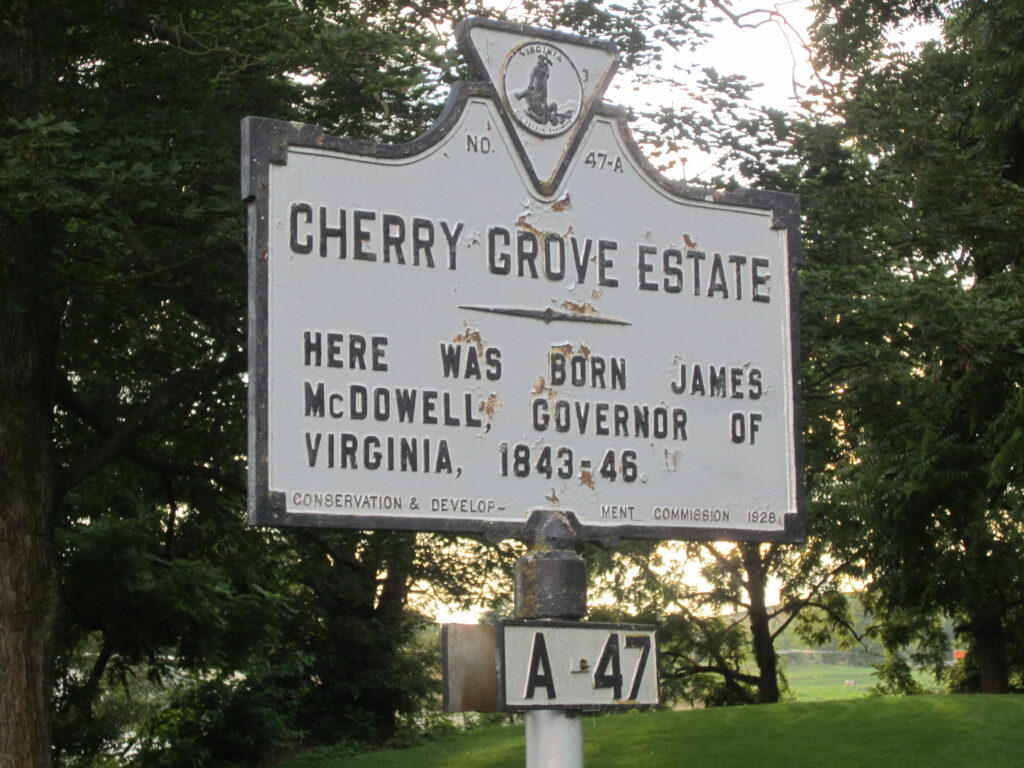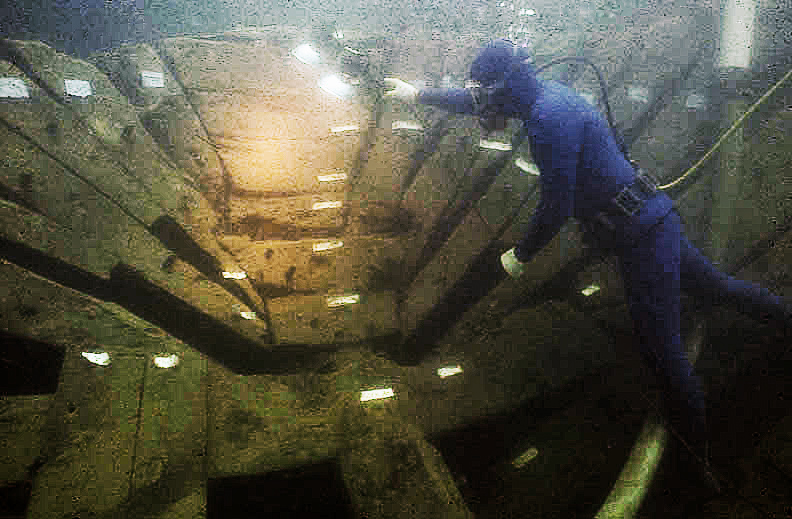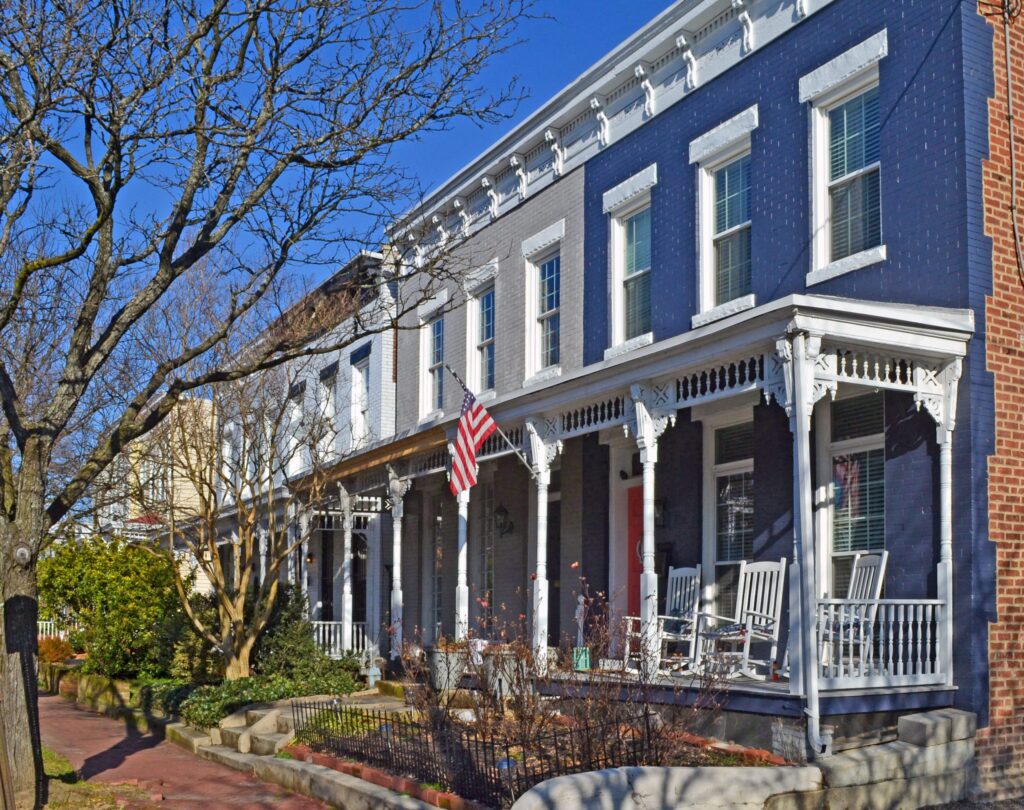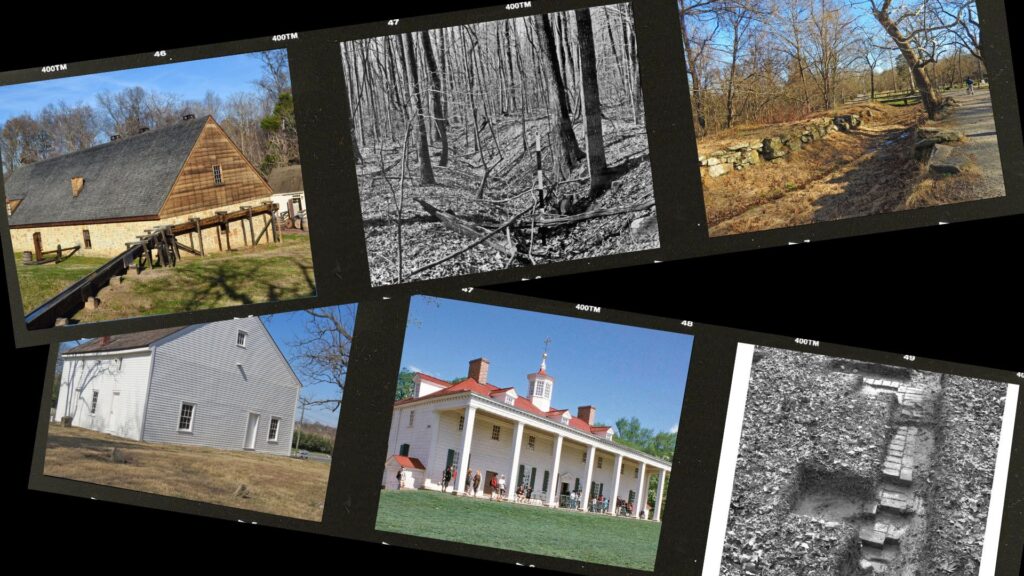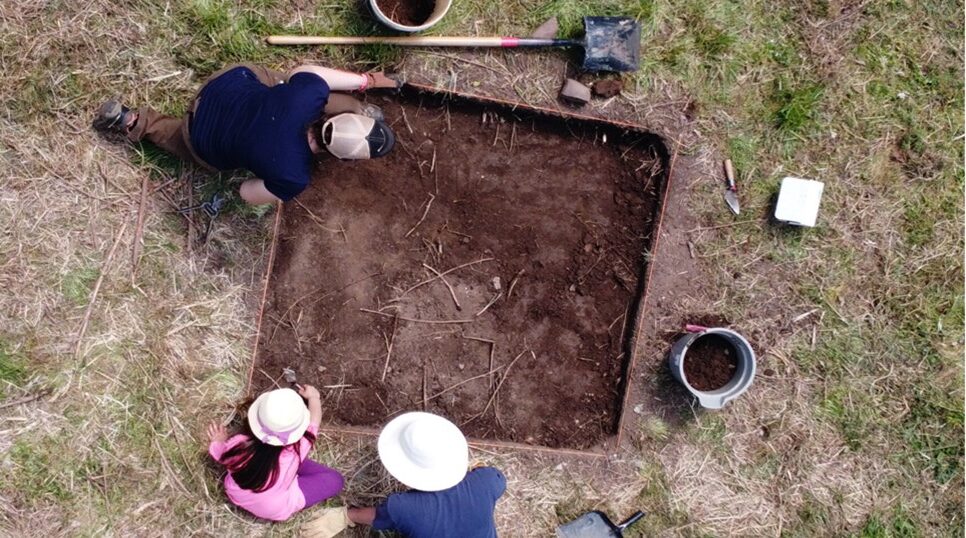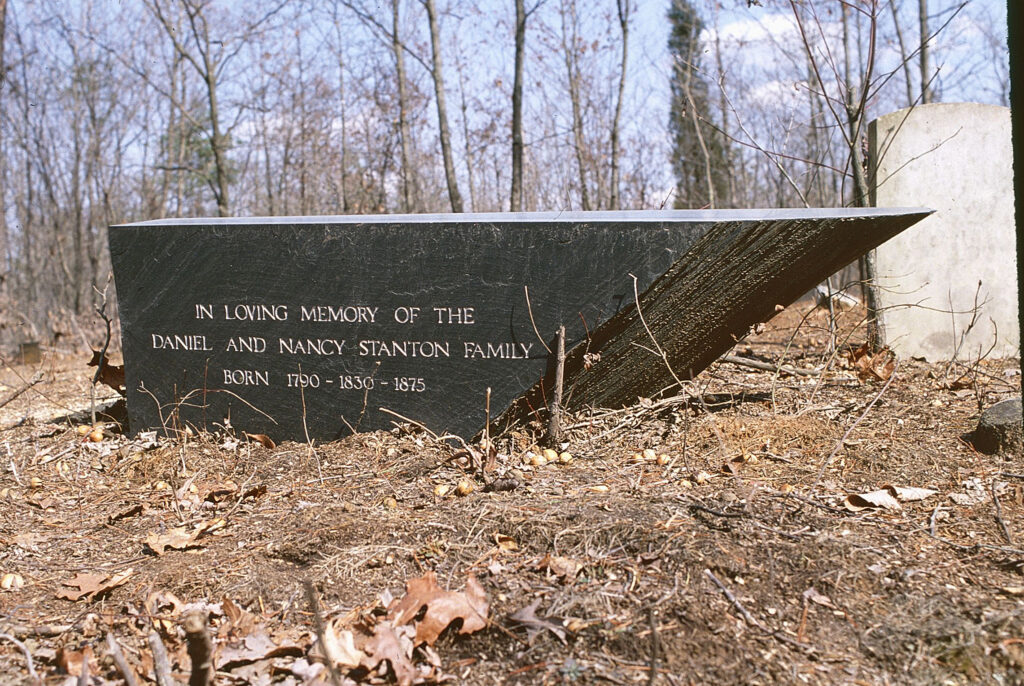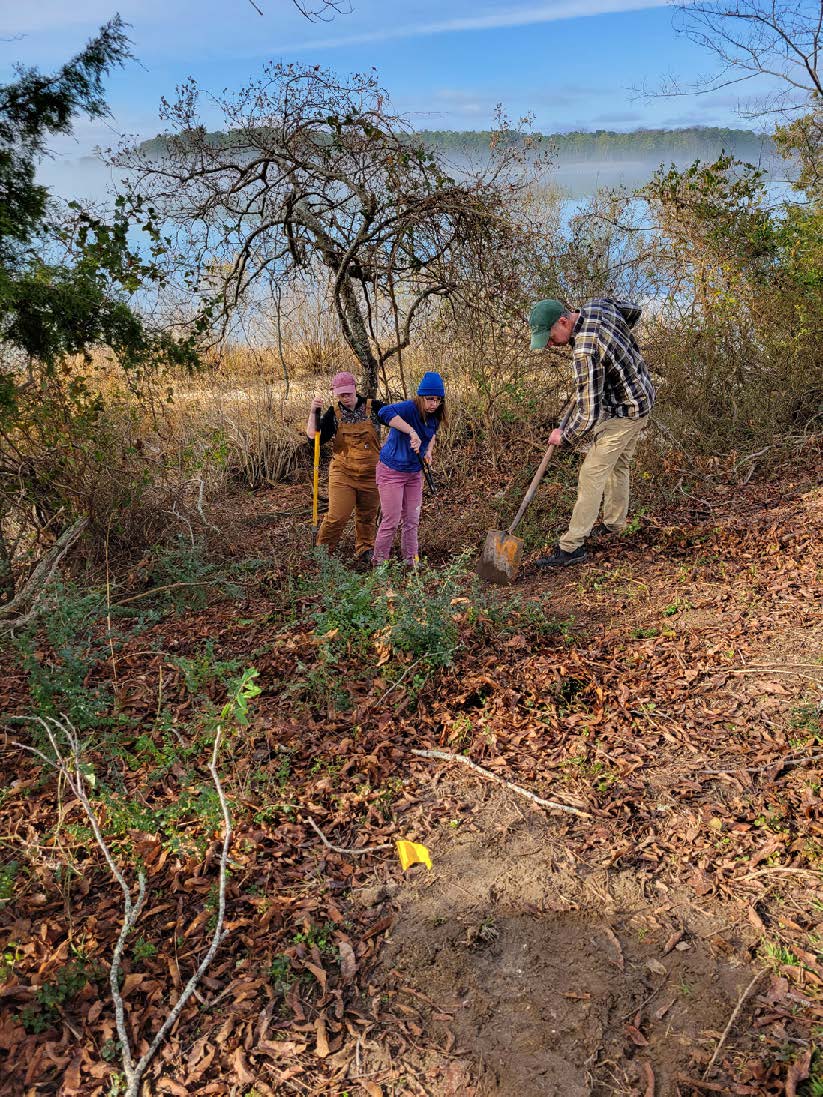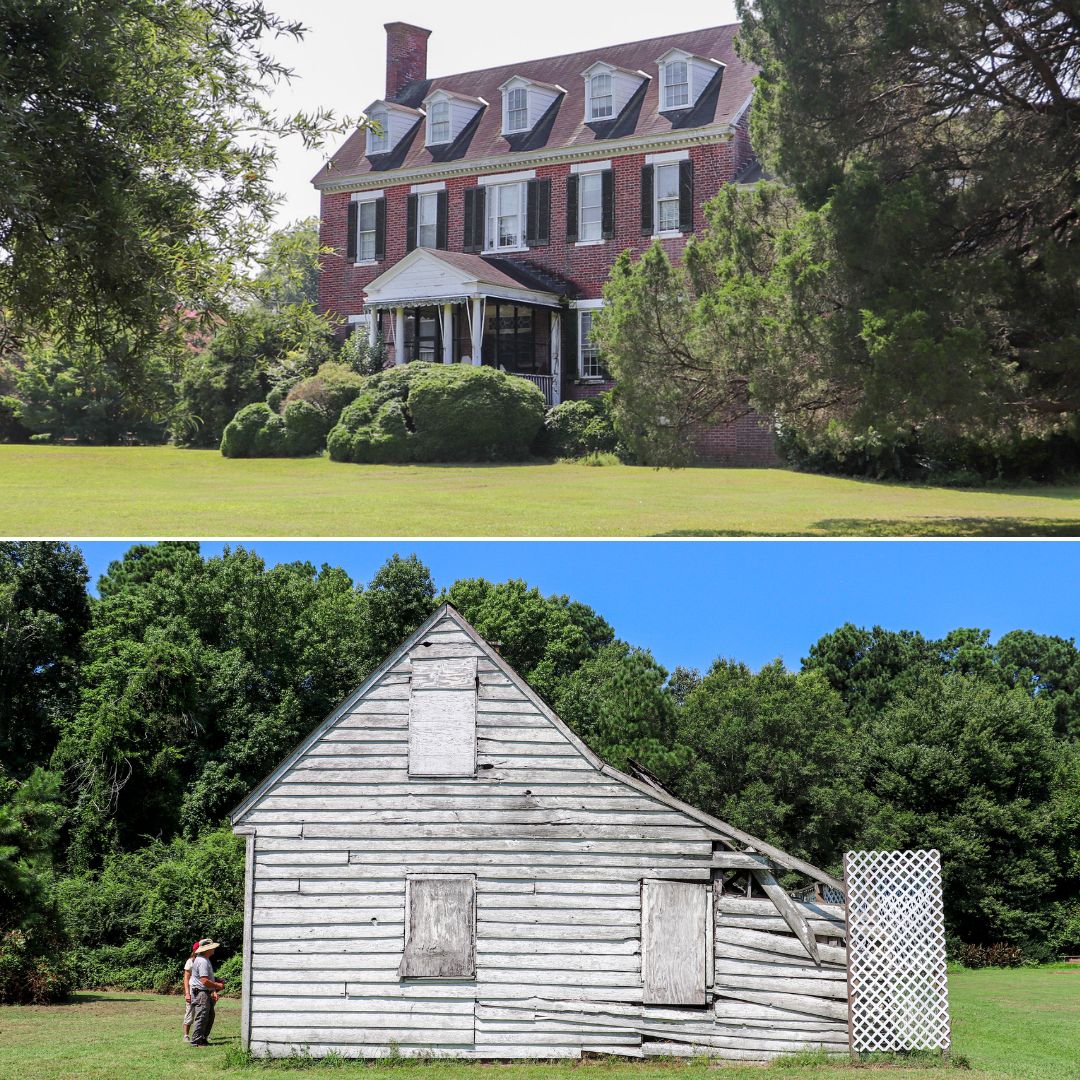State Superlatives in Historic Preservation
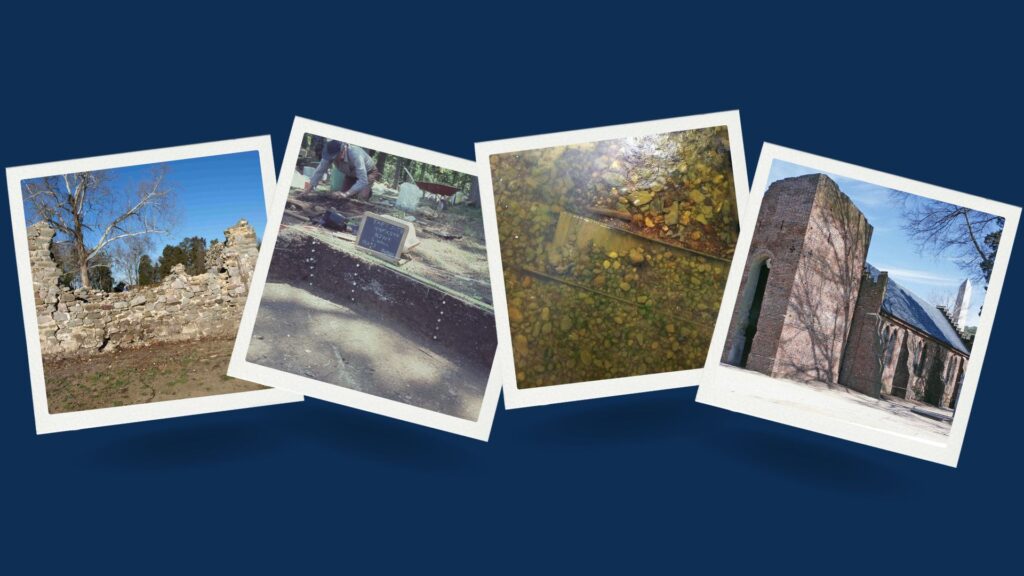
From an impressive six-figure total of recorded architectural resources to rare findings from the oldest archaeological site in the Commonwealth, here are a few fast facts highlighting historic preservation excellence in Virginia.
By DHR Staff
All photographs are from DHR unless otherwise indicated.
Question (Q): How many architectural resources have been recorded in the state of Virginia?
Answer (A): 224,226
Q: How many archaeological sites have been recorded in the state of Virginia?
A: 50,333
Q: Which county/city/locality in Virginia has the highest number of properties listed in the Virginia Landmarks Register (VLR) and the National Register of Historic Places (NRHP)?
A: City of Richmond, which has 230 properties listed in the registers
[Another fun fact - DHR integrates around 100 new sites and properties per week into our inventory, known as the Virginia Cultural Resources Information System (VCRIS). While only a small percentage of these architectural and archaeological resources ultimately become listed in the VLR, thousands more are eligible to be included and are just as historically significant!]
Q: Which VLR-listed property has the oldest nomination form?
A: Tuckahoe. This 18th-century plantation has been listed in the VLR since November 1968, two years after the establishment of the Virginia Historic Landmarks Commission, predecessor of the Board of Historic Resources. The mansion is also one of the very first properties in Virginia to be included in the NRHP, which was created in 1966 under the Historic Preservation Act.
Located on River Road, in a section where Goochland and Henrico counties overlap, Tuckahoe was one of several plantations founded by William Randolph of Turkey Island for his sons. Randolph’s second son, Thomas, probably built the north wing ca. 1733. The south wing, connecting saloon, and carved woodwork were most likely added by Thomas’s son, William Randolph, following his marriage in 1734 to Maria Judith Page. A row of early outbuildings forming a rare plantation “street” stands to the north of the house. The tiny schoolhouse is where Thomas Jefferson attended classes when his parents, Peter and Jane Randolph Jefferson, were at Tuckahoe. Tuckahoe remained in the Randolph family until 1830. In 1935 it was acquired by Mr. and Mrs. N. Addison Baker, whose descendants live there today.
Q: What is the oldest archaeological site in Virginia?
A: Cactus Hill Archaeological Site in Sussex County. Cactus Hill is a Native American campsite located next to the Nottoway River. It contains stratified and well-preserved deposits dating to the Woodland, Archaic, and Paleoindian periods, thereby spanning the entire period of Native American settlement in Virginia prior to European contact. Two archaeological research teams have led excavations at Cactus Hill, the Nottoway River Survey and the Archeological Society of Virginia. Extremely rare archaeological deposits predating Paleoindian Clovis occupation make Cactus Hill one of the oldest Native American sites yet discovered in all of North and South America. Charcoal from these pre-Clovis deposits at the site have been radiocarbon-dated to more than 15,000 years ago.
Q: Where is the oldest highway marker located in Virginia?
A: The first markers in the state program were erected on U.S. Route 1 between Richmond and Alexandria in 1927. DHR’s database indicates that there are still three markers from 1927 standing along this highway. These are Stuart E-8 (Spotsylvania County), Grant's Operations E-25 (Caroline County), and Nancy Wright's E-28 (Caroline County). We don't know which of these was installed first, although research in the program's records at the Library of Virginia may reveal the answer.
Q: Which state historical highway marker has the shortest description text?
A: Marker A-47 “Cherry Grove Estate”, which states: Here was born James McDowell, Governor of Virginia, 1843-46. The marker dedicated to the birthplace of Gov. McDowell features a wordcount of 10.
The marker with the second shortest description is JJ-24 “Campaign of 1781”, with just 12 words: Lafayette, marching southward from Raccoon Ford, camped here, June 8-9, 1781.
Three markers, each featuring descriptions with just 13 words, take third place for concision:
- C-19 “Bull Run Battlefields”: Ten miles west were fought the two battles of Manassas or Bull Run.
- S-26 “Lafayette at Petersburg”: From this hill Lafayette, on May 10, 1781, shelled the British in Petersburg.
- O-5 “Outer Fortifications”: On the hilltops here ran the outer line of Richmond fortifications, 1862-1865.
Q: Where is the oldest tombstone in Virginia?
A: Jamestown Island, where the so-called "Knight's Tombstone" (pictured above, courtesy of Jamestown Rediscovery) is thought to originally mark the grave of Sir George Yeardley, a lord governor in the Colony of Virginia who died in 1627. The tombstone measures 32 inches by 68 inches and is composed of Belgian black limestone. More information about the tombstone is available through the Jamestown Rediscovery Foundation.
Q: What was the first underwater archaeological site listed in the VLR and NRHP?
A: The Yorktown Wrecks of Gloucester County, included in the registers in 1973. In October 1781, when the British army of Lord Cornwallis was bottled up at Yorktown by the Allied Army, and the French fleet was blockading the Chesapeake Bay, as many as twenty-six British vessels were scuttled off Yorktown. This prevented a landing by the French fleet. Cornwallis attempted to evacuate his troops across the York River, but a violent squall prevented their escape. A British flag of truce was flown the next day; and on October 19, 1781, the surrender was signed, effectively ending the Revolutionary War. Investigations of the Yorktown Shipwrecks Maritime Archaeological Site by DHR located nine ships dating to the wartime period. In 1982 a cofferdam was erected around one of the best preserved of the Yorktown Wrecks, a British supply ship, the Betsy. The systematic excavation of the Yorktown Wrecks site by DHR archaeologists was a precedent-setting demonstration of underwater archaeological techniques.
Q: Which county/city/locality in Virginia has the most architectural properties recorded?
A: City of Richmond, with 20,111 properties identified and documented in VCRIS
Q: Which county/city/locality in Virginia boasts the highest number of archaeological sites recorded in the statewide inventory (VCRIS)?
A: Fairfax County, with 2,571 sites recorded in VCRIS
Q: How many VLR/NRHP listings include archaeological resources on the property?
A: There are currently 241 listings with known archaeological resources.
Q: Which African American cemetery in Virginia was the first to get individually listed in the VLR and NRHP?
A: Stanton Family Cemetery in Buckingham County, listed in the VLR and NRHP in 1993. However, other African American cemeteries have been listed earlier as part of historic districts or large plantation properties, according to DHR’s cemetery archaeologist Joanna Wilson Green.
Started in 1853, the Stanton Family Cemetery is a very rare surviving burying ground established by free African Americans prior to the Civil War. The Stantons were one of the few extended free Black families living in rural Virginia at the height of the slavery period. The unfenced plot, located in northeastern Buckingham County, contains at least 36 marked burials, a large number for African American family cemeteries, and likely holds additional unmarked burials. Most of the families buried in this cemetery worked in the slate quarries and many, if not all, of the headstones and footstones are made of the local grey Buckingham Slate. The Stanton Family Cemetery was originally part of a 46-acre farm purchased in 1853 by Nancy and Daniel Stanton. Although the family moved from the homestead in 1930, it retained ownership of the land and the cemetery, and continued family burials at the latter. The last burial occurred in 1941, when Harriet Stanton Scott, granddaughter of Nancy and Daniel Stanton, was interred. Stanton Family Cemetery is a recipient of grants from the African American Cemetery & Graves Fund.
